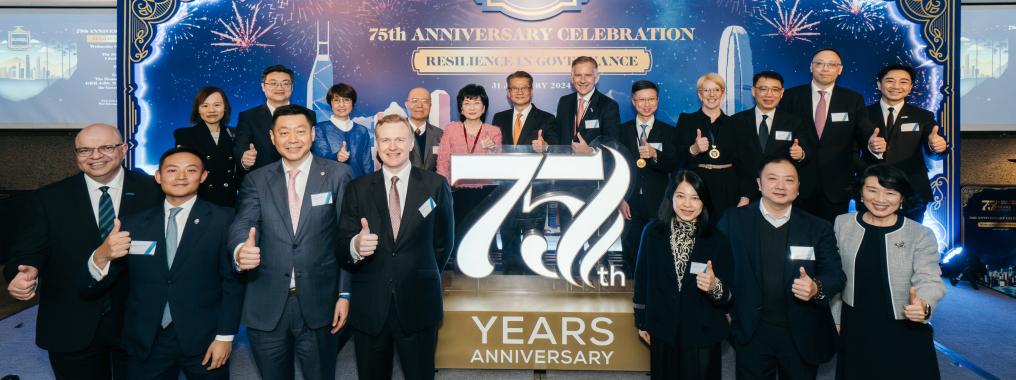In the first of three articles, published in CGj in September 2023, authors at the Research Centre for Sustainable Hong Kong, City University of Hong Kong, made recommendations to improve the city’s carbon emissions reduction measures. Here, in the second article, they examine the issue of power generation and offer some policy suggestions for advancing the use of low-carbon and renewable energy sources.
Highlights
- power generation accounts for 60% of Hong Kong’s GHG emissions, which is significantly higher than the global average
- the government and Hong Kong’s two power suppliers need to agree a timetable for decommissioning the coal-fired power plants, as well as the proportion of electricity to be generated through renewable energy, with a carbon tax to be imposed on the companies if the targets are not met
- to entice the electricity companies to develop more carbon-neutral projects, the government could introduce investment facilitation frameworks and tax incentives to increase investment in renewable energy and speed up the elimination of coal-fired units
A study by the Legislative Council of Hong Kong reveals that power generation accounts for 60% of Hong Kong’s greenhouse gas (GHG) emissions. This share is significantly higher than the global average, as well as higher than for Organisation for Economic Co-operation and Development (OECD) countries and for Singapore (see Table 1). In comparison, because the tertiary (services) sector is the economic mainstay of Hong Kong, GHG emissions from industry and agriculture are remarkably low. This contrast drives home how critical it is to reduce emissions from power generation if Hong Kong is to achieve its stated midterm reduction targets by 2035 and reach carbon neutrality by year 2050.

The government and the two power suppliers of Hong Kong – CLP Power Hong Kong Ltd (CLP) and Hong Kong Electric Co Ltd (HK Electric) – have announced the goal of phasing out all coal-fired power plants by 2035, and have doubled down efforts on renewable energy to increase the proportion of electricity generated by renewable fuel from less than 1% up to 10%. In this article, we apply the framework of ‘pull and push’ policy tools, discussed in our first paper, to identify carbon taxation as a viable ‘market control’ measure, and technical standardisation and the promotion of climate risk investment as a measure under the ‘commercialisation mechanism’.
Energy transition: a work in progress
The Hong Kong government has outlined a two-stage roadmap to achieve carbon neutrality by 2050. During the first stage, all coal-fired power plants will be decommissioned and the proportion of electricity generated by renewable fuel will be increased from below 1% to between 7.5% and 10%, including through wind power (3.5% to 4%), waste-to-energy (3% to 4%) and solar energy (1% to 2%). The second stage should ensure that Hong Kong achieves net-zero carbon electricity generation before 2050.
CLP and HK Electric have also rolled out measures (see Table 2) to achieve their emissions reduction targets. CLP will replace its coal-fired power plants at Castle Peak with two new gas-fired power plants at Lung Kwu Tan. HK Electric will transit from coal to gas by constructing three gas-fired power plants on Lamma Island. Research indicates that generating one megajoule of electricity with natural gas will result in 56,000 kilograms of carbon dioxide (CO2), which is 40% less than generating electricity using coal (94,000 to 96,000 kilograms of CO2 emitted for every megajoule of electricity). Therefore, substituting coal with natural gas for power generation is an effective way to reduce emissions.

CLP and HK Electric both have plans to increase investments in renewable energy. CLP is focusing on electricity generation using waste-to-energy, wind power and solar energy projects, while HK Electric will focus on building a large-scale offshore wind farm southwest of Lamma Island.
Coal currently accounts for between 20% and 50% of the fuel mix for the electricity generated by these two power suppliers, while renewable energy accounts for less than 1% (see Table 3), so it will be tough for these companies to completely phase out coal and achieve their renewable energy targets by 2035.

The Scheme of Control Agreements (SCAs) (2018–2033) between the government of Hong Kong and each of the two power companies stipulate that the companies recognise government targets to reduce carbon emissions, tackle climate change and lower emissions to improve regional air quality. However, the SCAs remain vague about how and when to achieve these emissions targets, and the agreements merely focus on the incentive and penalty mechanism resulting from the profit return adjustment of electricity tariffs and the guarantee of electricity supply.
Policy recommendations for accelerating Hong Kong’s energy transition
Market control: introduce a carbon tax to phase out coal power and develop renewable energy
Carbon tax is aimed at reducing the carbon footprint by exerting cost pressure on companies and individuals. Singapore began charging a carbon tax of US$11 per metric ton of CO2 (approximately HK$86) in 2019 and will progressively increase the tax to US$29 (about HK$227) by 2030.
The Hong Kong government should take similar measures, communicate with CLP and HK Electric, and decide on a timetable for decommissioning the coal-fired power plants. If the two power companies do not dispose of their power plants within the agreed time frame, a carbon tax should be imposed. Additionally, the government should form an agreement with CLP and HK Electric on the proportion of electricity to be generated by renewable energy and then levy a carbon tax on them if they fail to produce the target amount of renewable energy electricity.
substituting coal with natural gas for power generation is an effective way to reduce emissions
The government could also implement a trading mechanism to incentivise CLP and HK Electric to produce more renewable energy, giving each company the right to purchase carbon from each other in case one of them fails to reach their emissions reduction targets.
Commercialisation mechanism: improve technical standardisation to promote renewable energy generation
Technical standardisation establishes a unified standard to help goods and services achieve international recognition, in which local enterprises can engage in global renewable energy projects with capital, technology and marketing support. Singapore is the market leader in the certification and standardisation of solar photovoltaics, and it actively promotes international cooperation and technology transfer of renewable energy projects. In comparison, Hong Kong lags behind in technical standardisation, but we can capitalise on the huge market in the Mainland to catch up. In 2022, China exported US$512.5 billion worth of photovoltaic products (including silicon wafers, cells and components), with an annual increase of over 8%. If we include wind power products, then Chinese manufactured equipment could reduce carbon emissions for importing countries by up to 5.73 billion metric tons.
CLP and HK Electric could strengthen their ties with institutions in the Mainland to foster their use of renewable energy. The government could encourage local certification institutions (such as universities, the Hong Kong Quality Assurance Agency, Hong Kong Productivity Council and Hong Kong Science Park) to work with Mainland institutions to establish universal technical standards for Chinese products, thereby promoting Hong Kong’s role as an innovation and technology hub, and the Mainland as a manufacturer of innovative technology.
Commercialisation mechanism: advocate for climate-risk investment in the financial market, and strengthen the financing and risk management capabilities of the electricity companies to participate in carbon-neutral projects
Carbon-neutral businesses can result in a zero-sum game. Business risks may put off many conventional energy companies’ interest in carbon-neutral technology. However, with the introduction of a climate-risk investment mechanism, more energy companies could participate more extensively in carbon-neutral projects.
The government could also introduce policies to increase investment in renewable energy and to speed up the elimination of coal-fired power plants before 2035, such as through investment facilitation frameworks and tax incentives. This would benefit and entice the electricity companies to develop more carbon-neutral projects, including hydrogen production and carbon capture technology (that is, the blue hydrogen technology route).
Summary
There is a road map for the Hong Kong government and the two electricity companies to reduce emissions, but time is short and we are racing against the clock. Effective measures and efficient execution are essential to ensure timely results.
In our previous article in this series, we summarised six categories of emissions reduction policy tools, while in this paper we have proposed a carbon tax and ways to improve commercialisation, which fall into two of those six categories, namely market control and the commercialisation mechanism. We hope these ideas motivate stakeholders in Hong Kong to think about more practical measures to translate the net-zero carbon aspiration into reality.
While power generation accounts for by far the greatest proportion of GHG emissions in Hong Kong, transportation accounts for about one-fifth of the city’s total emissions. We will delve into this issue and propose some measures to tackle Hong Kong’s transportation emissions in next month’s journal.
Linda Chelan Li, Liang Dong, Phyllis Lai Lan Mo, Yunhong Liu and Kin On Li
Research Centre for Sustainable Hong Kong, City University of Hong Kong
This article is based on Policy Paper 22 of the Research Centre for Sustainable Hong Kong, City University of Hong Kong, issued in August 2023, which is the second of three policy papers making recommendations to help reduce GHG emissions in Hong Kong. The first article was published in CGj in September 2023, and the third and final article will be featured in CGj in April 2024.
The authors can be contacted at sushkhub@cityu.edu.hk.



